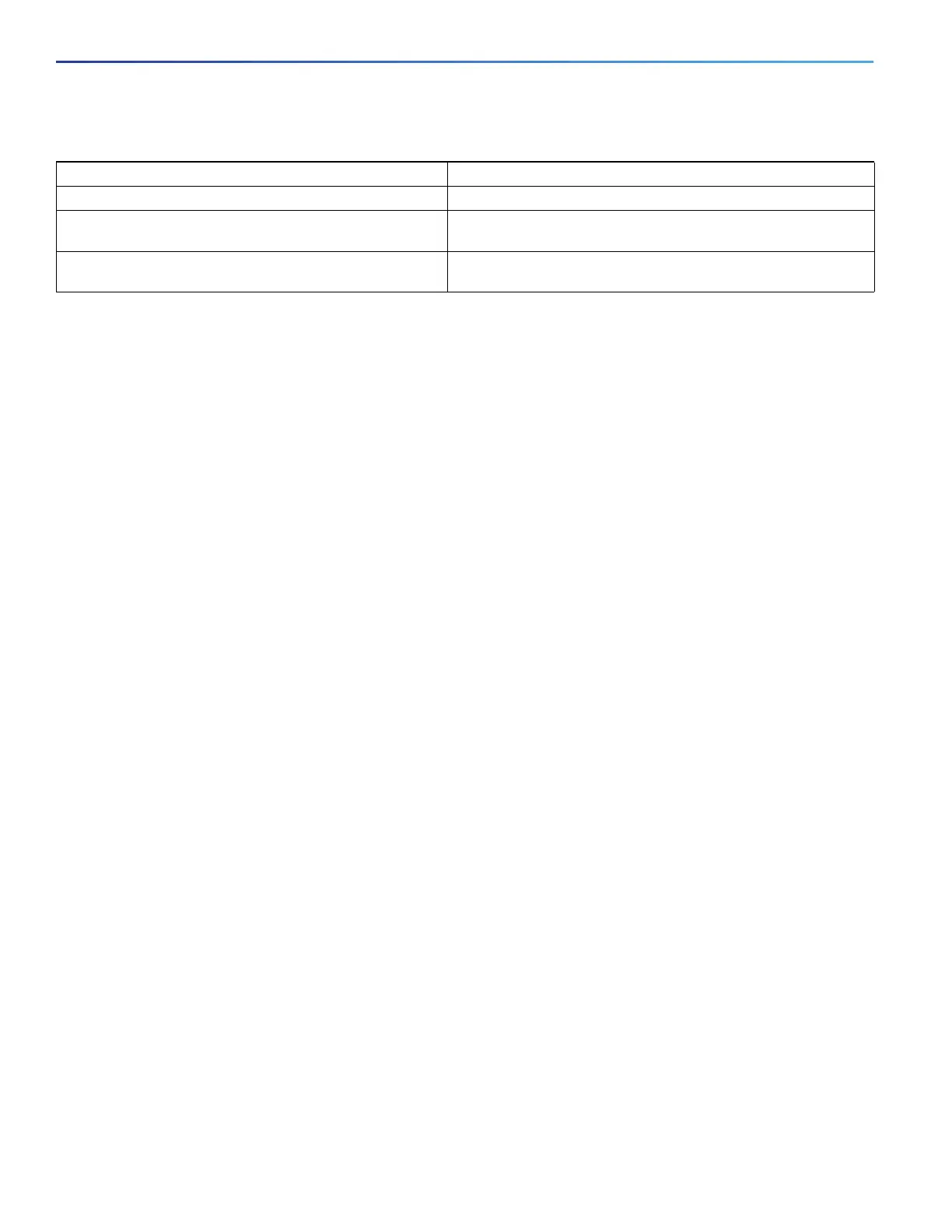646
Configuring QoS
Configuration Examples for Policy Maps
To test full-path QoS in both directions on an interface, you can configure Ethernet terminal loopback by entering the
ethernet loopback facility interface configuration command. In terminal loopback mode, the port appears to be up but
the link is actually down and no packets are sent out. Configuration changes on the port immediately affect the traffic
being looped back.
QoS Statistics
There are several ways to display QoS input and output policy-map statistics.
For input policy maps, you can use the show policy-map interface [interface-id] privileged EXEC command to display
per-class per-policer conform and exceed statistics. Policer conform statistics are the number of packets that conform
to the configured policer profile; policer exceed statistics are the number of packets that exceed the configured policer
profile. The switch does not support per-class classification statistics, but you can determine these statistics by
configuring policing at line rate for the class. In this case, no packets exceed the configured policer profile, and the
policer conform statistics would equal the class classification statistics.
This output also includes byte-level statistics for conform, exceed, and violate classes.
Another way to view input QoS statistics is in the output of the show platform qos statistics interface [interface-id]
privileged EXEC command. The per-port frame statistics are sorted by the DSCP and CoS values of the incoming frames
on the port. These statistics do not provide any information about the MQC input policy map configured on the interface.
For output policy maps, you can use the show policy-map interface [interface-id] command to display per-class
classification statistics that show the total number of packets that match the specified class. This count includes the total
number of packets that are sent and dropped for that class. You can use the same command to view the per-class tail
drop statistics.
Configuration Examples for Policy Maps
This section includes configuration examples for configuring QoS policies on the Cisco IE switch, including configuration
limitations and restrictions. The sections are broken into different configurations actions that a customer might do. Each
section provides the exact sequence of steps that you must follow for successful configuration or modification.
QoS Configuration for Customer A, page 647
QoS Configuration for Customer B, page 648
Modifying Output Policies and Adding or Deleting Classification Criteria, page 649
Modifying Output Policies and Changing Queuing or Scheduling Parameters, page 649
Modifying Output Policies and Adding or Deleting Configured Actions, page 650
Modifying Output Policies and Adding or Deleting a Class, page 651
show cpu traffic qos Display the QoS marking values for CPU-generated traffic.
show running-config Display the configured class maps, policy maps, table maps,
and aggregate policers.
show table-map [table-map-name] Display information for all configured table maps or the specified
table map.
Table 57 Commands for Displaying Standard QoS Information (continued)
Command Purpose

